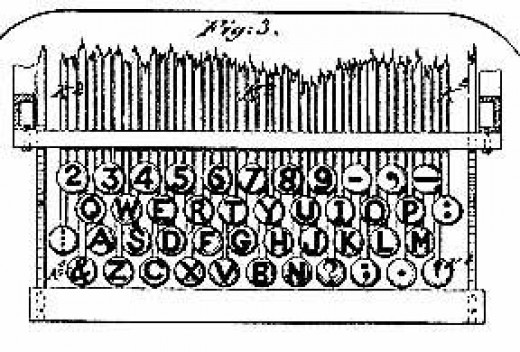The qwerty keyboard layout used on most computers was invented way back in the 1860 s

The QWERTY Keyboard Layout: A Remarkable Invention of the 1860s

The QWERTY keyboard layout is an integral part of our daily lives. Whether we are working on a computer, typing an important email, or simply browsing the internet, the QWERTY keyboard allows us to communicate efficiently and effectively. However, many of us are unaware of its fascinating history and the time period in which it was invented.
The QWERTY keyboard layout, as we know it today, was indeed invented way back in the 1860s. Its creation is attributed to Christopher Latham Sholes, a newspaper editor and printer from Wisconsin, United States. Sholes, along with his associates Carlos Glidden and Samuel W. Soule, developed the concept of the typewriter during this time.

The primary objective of designing the typewriter was to create a device that would increase typing speed and efficiency. Sholes recognized the need to arrange the keys in a way that minimized the likelihood of mechanical jams caused by fast typing. After several iterations, Sholes finalized the design of the QWERTY keyboard layout, which was patented in 1878.
One interesting aspect of the QWERTY keyboard layout is the arrangement of its keys. The name “QWERTY” itself comes from the first six letters of the upper row, starting from the left. The design was strategically created to spread out commonly used letters and avoid adjacent key presses, preventing the typewriter’s mechanical arms from jamming. Moreover, Sholes arranged the keyboard to place frequently used and commonly paired letters apart, further increasing typing efficiency.
Despite advancements in technology and the rise of alternative keyboard layouts, the QWERTY keyboard layout has stood the test of time. Its familiarity and widespread adoption have contributed to its enduring popularity. The layout became the standard for typewriters and later made its way into computer keyboards.
In today’s digital age, the QWERTY keyboard continues to dominate. Its prevalence is not only evident in physical keyboards but also on virtual keyboards displayed on touchscreens. Mobile devices, laptops, and desktop computers all adhere to the QWERTY keyboard layout, making it a universal standard for text input.
To conclude, the QWERTY keyboard layout, invented in the 1860s, has revolutionized the way we communicate through writing. Its intentional arrangement of keys and design considerations have undoubtedly contributed to efficient typing. Despite the passage of time and technological advancements, the QWERTY layout remains ubiquitous in our everyday lives.
Source: HubPages
Tags
Share
Related Posts
Quick Links
Legal Stuff

